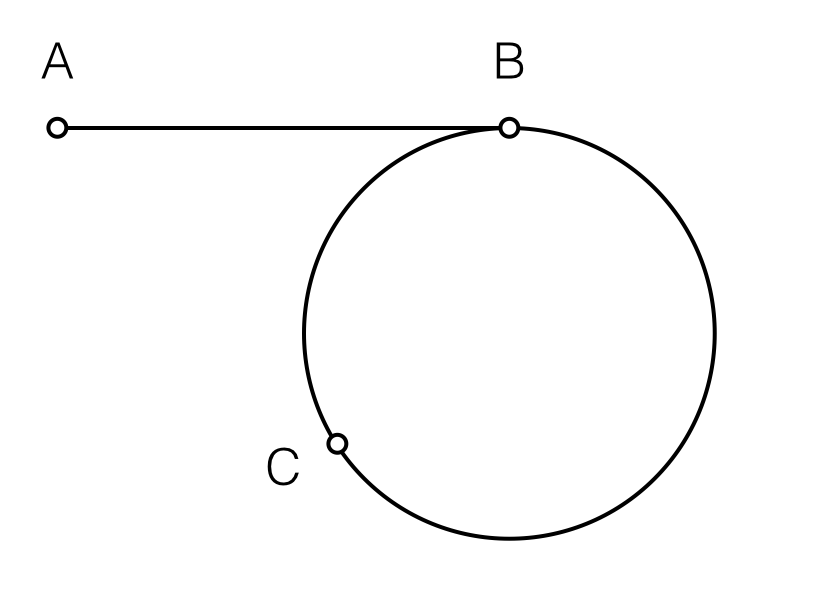How to Succeed in Algorithms Interview Series
Types of Two/Multiple Pointers
- One array, head and tail pointers
- maintain interval, expand head when still meets criteria, shrink tail when not
- Slow and fast pointers
- 一个数组, 从两边向中间移动(对撞型)
- 一个数组, 同时向前移动(前向型)
- 两个数组(并行型)
- Two arrays, both from start or end
- when element’s value/state is related with afterwards elements
- use stack
- or maybe traverse from end
- when element’s value/state is related with afterwards elements
When to use Two/Multiple Pointers
- range related
How
- pre-sort the array
- usually related with greedy
Multiple arrays (merge)
public int maxProfitAssignment(int[] difficulty, int[] profit, int[] worker) {
List<Pair<Integer, Integer>> jobs = new ArrayList<>();
int N = profit.length, res = 0, i = 0, maxp = 0;
for (int j = 0; j < N; ++j) jobs.add(new Pair<Integer, Integer>(difficulty[j], profit[j]));
Collections.sort(jobs, Comparator.comparing(Pair::getKey));
Arrays.sort(worker);
for (int ability : worker) {
while (i < N && ability >= jobs.get(i).getKey())
maxp = Math.max(jobs.get(i++).getValue(), maxp);
res += maxp;
}
return res;
}Two/Multiple same direction pointers in one array(尺取法)
- LeetCode 845 - Longest Mountain in Array
- LeetCode 844 - Backspace String Compare
- LeetCode 763 - Partition Labels
// start and end of the current window
int left = 0, right = 0;
// current pointer
for (int i = 0; i < S.size(); ++ i) {
right = max(right, last[S.at(i)]); // maximum index of the current window
// reach the end of current window
if (i == right) {
vResult.push_back(right - left + 1); // size of the current window
left = i + 1; // move to start of the next window
}
}- LeetCode 259 - 3Sum Smaller
- 3 pointers: i, int lo = i + 1, hi = nums.length - 1;
- [LeetCode 923 - 3Sum With Multiplicity]
- LeetCode 838 - Push Dominoes
- the state of current element, only depend on the shortest distance to ‘L’ and ‘R’.
- Propose assumption and verify it
- LeetCode 55 - Jump Game
- track maxReach: we don’t care what positions a[i] can reach, only the maxReach
- LeetCode 45 - Jump Game II: find the minimum number of jumps
Slow and fast pointers
LeetCode 141 - Linked List Cycle
- 2(a+b) = a+b+c+b, c = a

LeetCode 287 - Find the Duplicate Number
Forward and backward pointers
- GEEK - Find Maximum value of abs(i – j) * min(arr[i], arr[j]) in an array arr[]
- LeetCode 42 - Trapping Rain Water
- If there are two bars higher than this bar on two sides, then we can safely add the min(leftMax, rightMax) - height. We only need to keep one pointer on each side and moves the pointer with lower height each time
public int trap(int[] height) { int left = 0; int right = height.length - 1; int leftMax = 0; int rightMax = 0; int volume = 0; while (left < right) { if (height[left] <= height[right]) { if (height[left] >= leftMax) { leftMax = height[left]; } else { volume += leftMax - height[left]; } ++left; } else { if (height[right] >= rightMax) { rightMax = height[right]; } else { volume += rightMax - height[right]; } --right; } } return volume; } - LeetCode 67 - Minimum Window Substring
- expand (end pointer) the window until it meets the criteria
- shrink (start pointer) to make it smallest
- LeetCode 340 - Longest Substring with At Most K Distinct Characters
- LeetCode 360 - Sort Transformed Array
- LeetCode 632 - Smallest Range
Sliding Window
When to use
- window of size k
- Shortest/longest Subarray with xxx
How
- expand (end pointer) the window until it meets the criteria
- reset value when it violates
- shrink (start pointer) to make it smallest
- maintain states when expand and shrink: put in a map/set
- use together with queue or monotone queue
Implementation
use together with queue or monotone queue
public int shortestSubarray(int[] A, int K) {
int N = A.length;
long[] P = new long[N+1];
for (int i = 0; i < N; ++i)
P[i+1] = P[i] + (long) A[i];
// Want smallest y-x with P[y] - P[x] >= K
int ans = N+1; // N+1 is impossible
Deque<Integer> monoq = new LinkedList(); //opt(y) candidates, as indices of P
for (int y = 0; y < P.length; ++y) {
// Want opt(y) = largest x with P[x] <= P[y] - K;
while (!monoq.isEmpty() && P[y] <= P[monoq.getLast()])
monoq.removeLast();
while (!monoq.isEmpty() && P[y] >= P[monoq.getFirst()] + K)
ans = Math.min(ans, y - monoq.removeFirst());
monoq.addLast(y);
}
return ans < N+1 ? ans : -1;
}public int lengthOfLongestSubstring(String s) {
if (s.length()==0) return 0;
HashMap<Character, Integer> map = new HashMap<Character, Integer>();
int max=0;
for (int i=0, j=0; i<s.length(); ++i){
if (map.containsKey(s.charAt(i))){
j = Math.max(j,map.get(s.charAt(i))+1);
}
map.put(s.charAt(i),i);
max = Math.max(max,i-j+1);
}
return max;
}- Find zeroes to be flipped so that number of consecutive 1’s is maximized
public int lengthOfLongestSubstringKDistinct(String str, int k) { if (str == null || str.isEmpty() || k == 0) { return 0; } TreeMap<Integer, Character> lastOccurrence = new TreeMap<>(); Map<Character, Integer> inWindow = new HashMap<>(); int j = 0; int max = 1; for (int i = 0; i < str.length(); i++) { char in = str.charAt(i); while (inWindow.size() == k && !inWindow.containsKey(in)) { int first = lastOccurrence.firstKey(); char out = lastOccurrence.get(first); inWindow.remove(out); lastOccurrence.remove(first); j = first + 1; } //update or add in's position in both maps if (inWindow.containsKey(in)) { lastOccurrence.remove(inWindow.get(in)); } inWindow.put(in, i); lastOccurrence.put(i, in); max = Math.max(max, i - j + 1); } return max; } - LeetCode 340 - Longest Substring with At Most K Distinct Characters
- Sum of minimum and maximum elements of all subarrays of size k
- remove numbers out of range k
- remove numbers in k range as they are useless
- LeetCode 424 - Longest Repeating Character Replacement
- HARD: LeetCode 30 - Substring with Concatenation of All Words
- leetCode 475 - Heaters